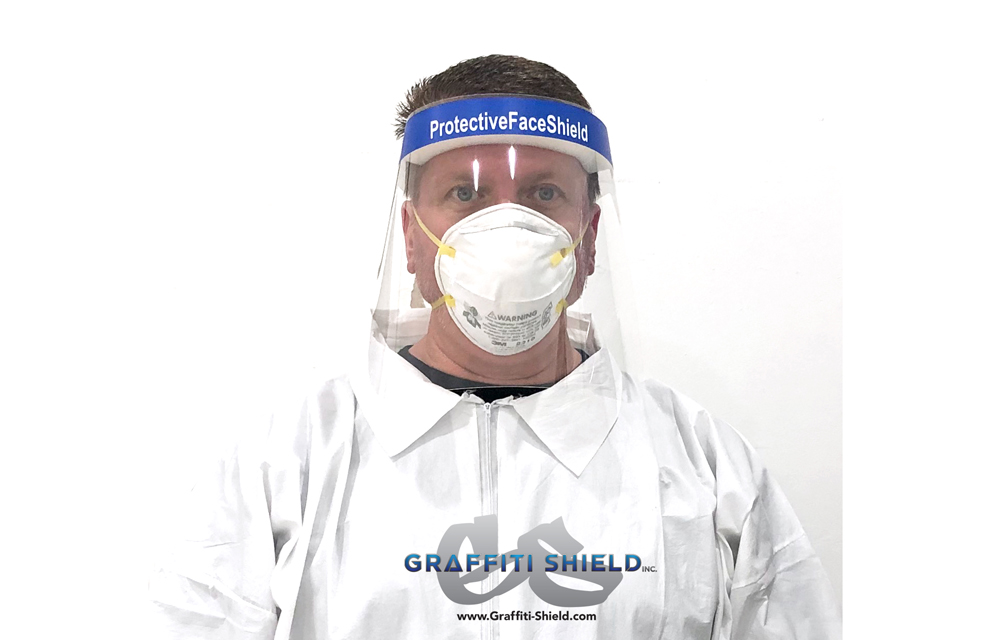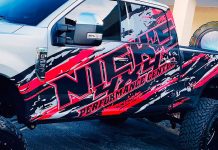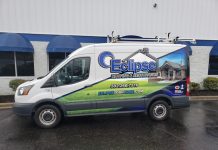Anaheim-based Graffiti Shield Inc., had carved out a niche cutting and manufacturing multiple-layer protective film products to help combat the rise in graffiti vandalism. But after years of solid growth since its founding in 2013, the company saw business fall by half within a few weeks after the COVID-19 shutdown.
The company was thinking about face shields as one possible new venture when one of its service accounts, a California hospital, called about procuring some film. Desperately short of protective face shields, the hospital had been trying to make its own by cutting film with scissors and trying to affix elastic bands.
Clear face shields have been in short supply globally since the pandemic hit. According to Bloomberg Businessweek, such shields are typically manufactured in high volumes using plastic injection molding. But companies looking to enter this market face months of designing and testing.
“Knowing the production equipment that we had, within a few hours we had designed and were cutting shields, completely changing the way we do business in order to help them,” said Graffiti Shield President Mike Schuch.
That first day Graffiti Shield produced 1,000 face shields. The next day the hospital placed an order for 5,000.
The original design used an elastic strap to hold the transparent polyester shield and foam pad in place. But elastic was impossible to find, so the team incorporated an adjustable strap secured by a Velcro fastener into the shield. To add a printed label to the top of the shield they turned to a product they were very familiar with: Avery Dennison Supreme Wrapping Film SW900.
Designed as a premium vehicle wrapping film, SW900 turns out to be ideal as laminate on top of a substrate that together compose the company’s anti-graffiti film products. It also proved perfect for branding the new face shield.
“The main reason we took the project on—besides helping out the hospital—was that we didn’t want to have to furlough any of our people,” CEO Jeff Green said. But as more orders followed that initial purchase, they had to keep bringing on new people to keep up with demand.
“It was about the assembly. We had to teach people who had never worked with adhesive vinyl film before how to apply the label to the polyester shield quickly but correctly so that the end product has a consistent, professional look with no tape line showing,” Green said.
The deciding factor was the film’s “air-release” adhesive that ensures no air bubbles are left behind when the film is applied to a surface.
“The film is easy to remove and reposition so you can get a clean surface every time. We’re able to teach new people in a matter of minutes how to do it,” Green said.
“Most people perceive this film to only be for customizing vehicles,” Avery Dennison
Regional Sales Manager Tamara Baumann said. “But I know of a lot of shops that use SWF for storefronts, walls, decals, and other commercial projects because they love the way it installs and do not feel the need to purchase a roll of cut vinyl.”
As of mid-April, Graffiti Shield’s production of the face shields was up to 3,500 units a day and the headcount had increased by 10. Green expects the daily volume will hit 5,000 within another week.
And it’s not just hospitals that are calling now.
“We’re talking to some fast-food restaurants that want us to brand our protective face shields with their colors and logos,” Green said.
They’ll want a side of SW900 film with that order.
—Press Release












